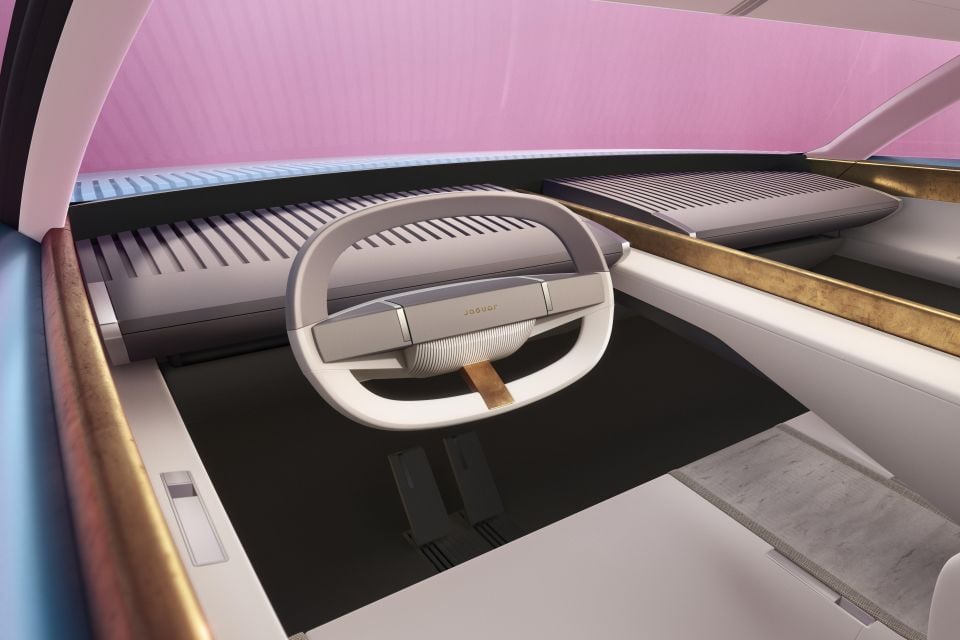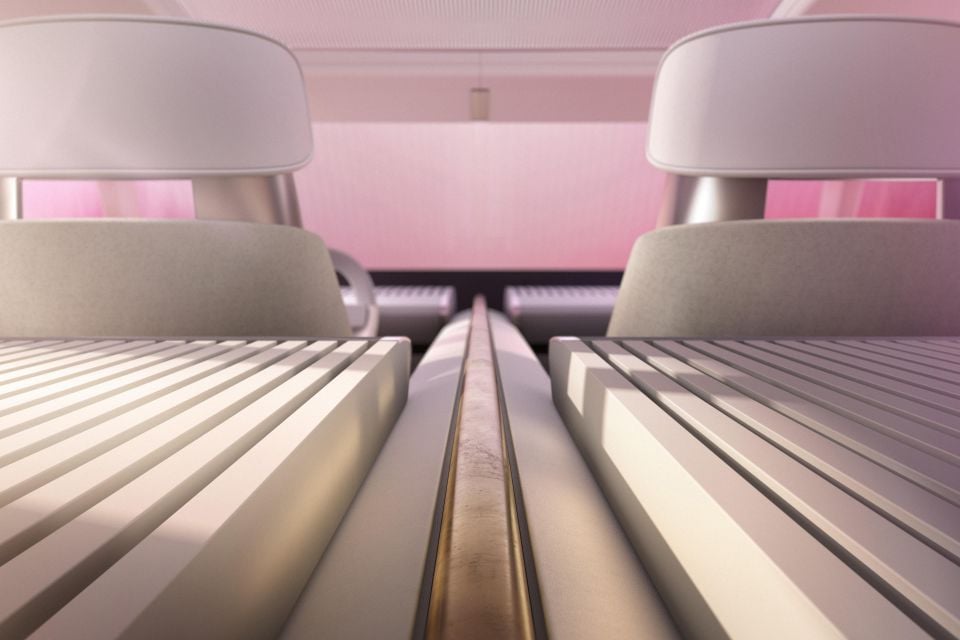

James Wong
2025 Kia EV5 Earth AWD review
4 Days Ago
Meet the Jaguar Type 00, the most consequential concept car in the British carmaker’s 90-year history.
Provocative and uncompromising, the Type 00 is a stunningly brave roll of the dice that kicks off a bold strategy designed to reinvent Jaguar as a high-end, low-volume 21st century luxury auto brand.
“Forget everything that went before,” JLR’s chief creative officer Gerry McGovern told the Jaguar design team when work started on the Type 00. And clearly, it listened.
100s of new car deals are available through CarExpert right now. Get the experts on your side and score a great deal. Browse now.

There are none of the usual Jaguar archetypes here; no hint of curvaceous cars in British Racing Green, their interiors basking in the warm glow of wood, the rich tang of leather, and bright splashes of chrome.
“The Type 00 commands attention, like all the best Jaguars of the past,” says chief exterior designer Tino Segui. That may be true, though few people will see the Type 00 as the logical heir to the gorgeous E-Type that stole the 1961 Geneva motor show.
The uncompromisingly blunt, extravagantly proportioned Type 00 is a brutalist middle finger to Jaguar tradition. And, says Jaguar managing director Rawdon Glover, it accurately previews the design language we’ll see on the coming generation of electric-powered Jaguars.

“The first production car was chosen quite consciously because it is the purest embodiment of Type 00,” Mr Glover confirms.
That car, a low-slung four-door coupe-like GT, is expected to make its debut in 2026.
Though Jaguar previously released photos of a camouflaged prototype, and now a series of computer-generated renders, it has revealed no technical details apart from saying the car will have a range of up to 700km and an electrical architecture that will enable it to take on 320km of range in just 15 minutes via a DC fast-charger.

Built on the new Jaguar Electrical Architecture (JEA) electric vehicle platform, the GT will almost certainly be an all-wheel drive vehicle powered by two electric motors, with multi-link suspension front and rear.
Unique to Jaguar, the JEA platform has been specifically designed to enable a low floor to enhance handling and allow the dramatic styling previewed by the Type 00.
There’s a lot of concept car eye-candy on the Type 00, such as the butterfly doors, the rear-view cameras hidden under hinged brass panels on the car’s flanks, and an interior trimmed with brass and travertine.

But the pure body surfaces punctuated by a handful of crisp lines, the uncompromisingly upright front and rear ends, the broad, almost flat bonnet, and low roof line will all be seen on the forthcoming GT.
The textured parallel line graphic at the front and rear (where the tail-lights are hidden in the upper and lower lines) that’s also repeated on the wheels and in the interior of the Type 00 will become a signature Jaguar design element, says JLR brand design director Richard Stevens.
His team also created the new font for the Jaguar name and the re-imagined leaper graphic that will appear on the new EVs.
And the Type 00’s flash interior previews a major upgrade for production Jaguars in terms of design, materials, and technologies such as deployable screens.

Mr Glover won’t be drawn on the other Jaguar EVs in the pipeline, other than to acknowledge the lineup will total three cars.
However, JLR insiders concede the success of vehicles such as the Ferrari Purosangue, Lamborghini Urus, and Aston Martin DBX707 mean a two-box, SUV-like Jaguar is almost certainly in the mix.
The third model will likely be a sports car, in both coupe and convertible format.

“The past strategy wasn’t the right one,” said Mr McGovern of the decision to have Jaguar embrace the modernist design philosophy he evolved at Land Rover.
“It was looking back too much,” he said.
And though Jaguar purists might regard the Type 00 concept, a more extreme take on modernism than any of McGovern’s Land Rovers, as heresy, the numbers back him up.

Positioning Jaguar in the volume premium vehicle segment, where it competed against Mercedes-Benz, BMW, and Audi – a strategy developed when Ford Motor Company owned the brand and continued under Tata’s ownership – proved an expensive failure.
Jaguar never got anywhere near selling the 600,000 vehicles a year it needed to be profitable.
The dramatic re-invention of Jaguar is based on a simple premise: JLR wants to sell fewer Jaguars at higher prices and have them deliver fat profits.

Ironically, that’s a business model JLR well knows and understands. The company last year sold about 80,000 full-size Range Rovers at an average transaction price of about $280,000, and close to 125,000 Defenders at an average transaction price of just over $145,000.
While Jaguar has been bleeding cash, Land Rover now makes an average profit of almost $40,000 per vehicle sold.
JLR is banking a whole new audience – younger and wealthier, more connected, and more urban – will be attracted to the new-look Jaguar.

“It’s a complete reset,” says JLR boss Adrian Mardell, “but we’ve done it before with Defender and we will do it at Jaguar.”
Mr Glover says he expects only 10 to 15 per cent of Jaguar’s existing customer base will stay with the brand over the coming years, in part because the least expensive car in the new Jaguar EV lineup will retail for considerably more than $200,000.
But if the move upmarket works, it means Jaguar can sell as few as 50,000 cars a year and make money.

That said, the recent worldwide slowdown in demand for EVs suggests the switch to building nothing but electric vehicles adds a further element of risk to JLR’s bold reinvention of Jaguar.
“We can’t think about 2024,” Mr Glover gamely insists. “We believe that in the long term, the future is electric.”
The Type 00, a car that Mr McGovern says does not desire to be loved by everyone, represents a profound pivot for Jaguar. And a huge gamble.
But in truth, JLR has nothing to lose. As much as the purists might howl, the reality is too few people loved the old Jaguar enough to keep it profitable. A new Jaguar was needed.
Where expert car reviews meet expert car buying – CarExpert gives you trusted advice, personalised service and real savings on your next new car.


James Wong
4 Days Ago


Angus MacKenzie
3 Days Ago


Paul Maric
2 Days Ago


Max Davies
2 Days Ago


James Wong
1 Day Ago


Damion Smy
19 Hours Ago
Suggested Comparisons